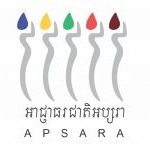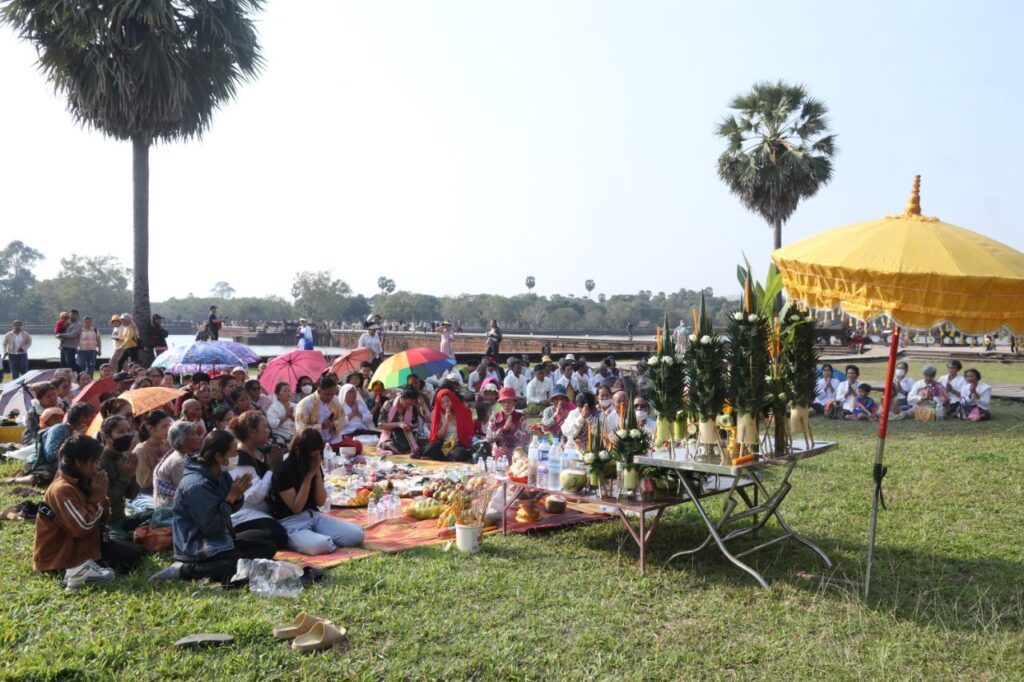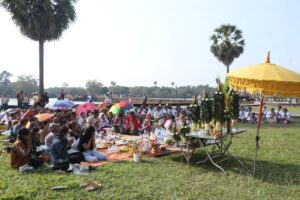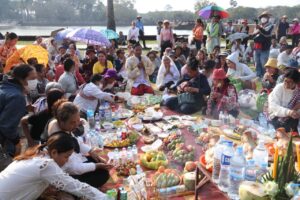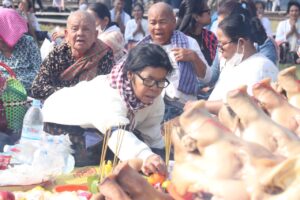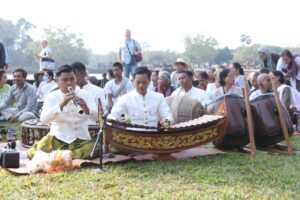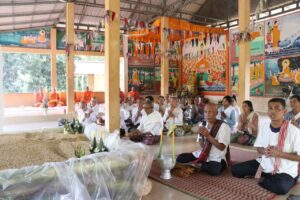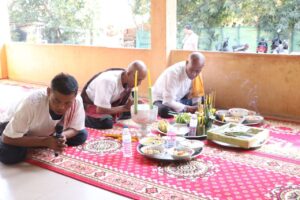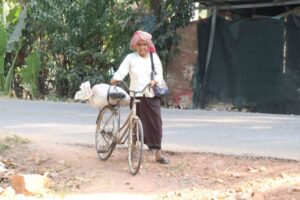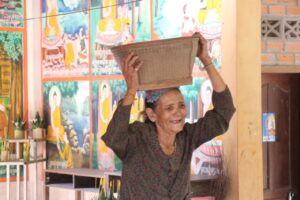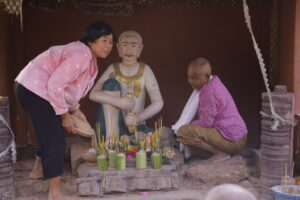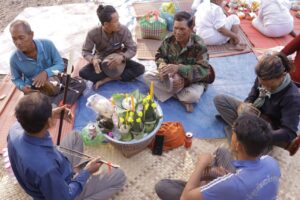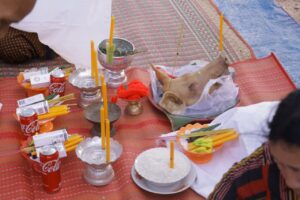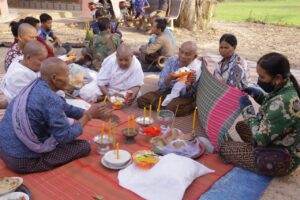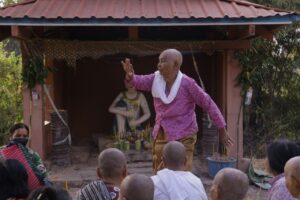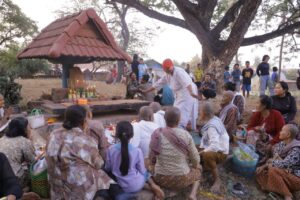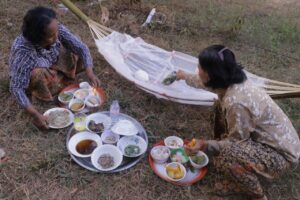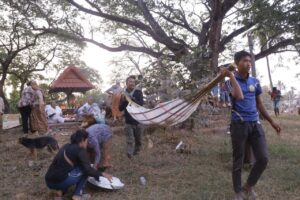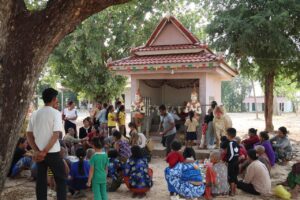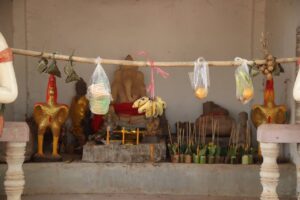ជាទម្លាប់រៀងរាល់ឆ្នាំ ឱ្យតែដល់ថ្ងៃ៣កើត ខែមាឃធំ អ្នកស្រុកក្នុងតំបន់អង្គរ តែងតែប្រារព្ធពិធីឡើងមាឃយ៉ាងគគ្រឹកគគ្រេងទៅតាមលទ្ធភាពដែលអ្នកទ្រទ្រង់មាន មិនដែលខកខានឆ្នាំណាឡើយ។
ភូមិស្រុកជាច្រើនក្នុងតំបន់អង្គរបានរៀបចំពិធីនេះឡើងក្នុងថ្ងៃតែមួយ នៅកន្លែងអ្នកតាដែលពួកគាត់គោរពបូជាដូចជា ក្នុងភូមិ ទីទួលបុរាណ ប្រាង្គប្រាសាទ ឬវត្តអារាមជាដើម។
ជាលក្ខណៈរួម គឺពិធីឡើងមាឃ ឬឡើងអ្នកតាតែងប្រារព្ធធ្វើឡើងនាពេលរសៀលដូចៗគ្នា និងមានគោលបំណងតែមួយ គឺដើម្បីសុំសុខសប្បាយ សុំមានទឹកភ្លៀងគ្រប់គ្រាន់ក្នុងការធ្វើកសិកម្ម សុំឱ្យដីមានជីជាតិទទួលបានភោគផលច្រើន សត្វចៀសផុតពីជំងឺ។ ពិសេស គឺបង្ហាញពីការបិទបញ្ចប់វដ្តនៃរដូវកសិកម្ម។
ក្រៅពីលក្ខណៈរួមខាងលើ ទំនៀមបុរាណមួយនេះ ក៏មានលក្ខណៈខុសគ្នាខ្លះដែរទៅលើកិច្ចពិធីនិងរៀបចំគ្រឿងរណ្តាប់បូជាសំណែនដូចជា កន្លែងខ្លះធ្វើម្ហូបអាហារចំណីចំណុកចម្រុះ ខ្លះធ្វើនំបញ្ចុក ខ្លះពូនភ្នំស្រូវ កន្លែងខ្លះមានលៀងមេមត់ ឯខ្លះទៀតពុំមាននោះឡើយ។ អ្វីទាំងអស់នេះ យោងទៅតាមទម្លាប់របស់ប្រជាជន ជីវភាព និងការប្រតិបត្តិពីមួយជំនាន់ទៅមួយជំនាន់៕
អត្ថបទ៖ ឆាយ ផាន់នី
រូបភាព៖ ការិយាល័យផ្សព្វផ្សាយ
The Lerng Meak or Lerng Neak Ta ceremony is a significant cultural event for the residents of the Angkor region, symbolizing the conclusion of the agricultural season. This annual tradition is deeply rooted in the community’s history and is observed consistently each year without fail.
On a designated day, multiple villages in the Angkor area partake in the ceremony simultaneously, gathering at locations of ancestral significance such as ancient mounds, temples, or monasteries. The ceremony typically takes place in the afternoon and serves several purposes: it is a time for worshipping ancestors, seeking blessings for good health, requesting adequate rainfall for farming, ensuring fertile land for abundant crops, and safeguarding against diseases.
While the overarching themes and objectives of the Lerng Meak ceremony remain consistent across different villages, there are variations in the rituals and offerings prepared. Some communities may focus on creating diverse types of food, while others might emphasize making noodles or rice cakes. These differences reflect the unique customs, lifestyles, and practices that have been passed down through generations.
Article by Chhay Phanny
Photos by Office of Communication
Translation by Net Phirun
